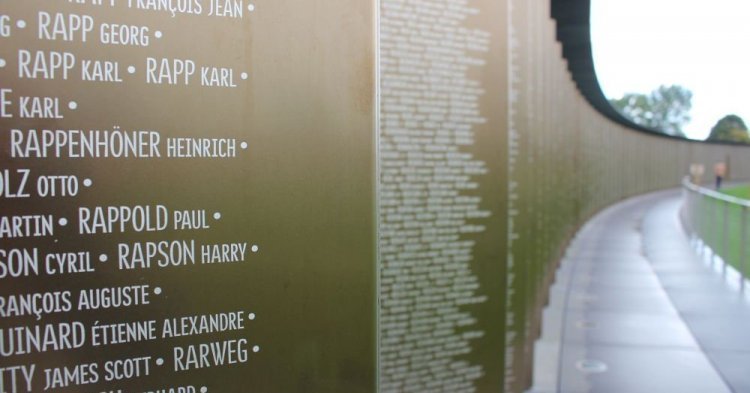The first step: remembrance day at Douaumont Fort on 11 November 2008
The “Europeanisation of national remembrance” is difficult to define, but in this case it is about re-appropriating national historical events, giving them a new European dimension, inscribing them in the broader frame of a common European history, and understanding them as the beginning of European integration.
This change was especially noticeable on 11 November 2008, when French President Nicolas Sarkozy chose to organise First World War commemorations at Fort Douaumont in Meuse, thus breaking with the tradition of holding memorials in Paris. He sought to endow the commemoration with a European dimension and to create an “anthem to European reconciliation”. To achieve this, Sarkozy invited representatives from the victorious Allies (heir to the British throne Prince Charles) as well as from defeated Germany (President of the Bundesrat Peter Müller). Even more interestingly, several representatives from the European institutions were also present: Commission President José Manuel Barroso and President of the European Parliament Hans-Gert Pöttering.
It is not a given that such personalities should be invited to a French commemoration service, since their countries experienced the war in very different ways – in some cases from different sides of the front. As such, they constructed their own unique historical memory. But to properly understand Nicolas Sarkozy’s approach, it needs to be situated in the context of the second half of 2008. France held the rotating Presidency of the Council of the EU and its priorities included relaunching efforts to create a European defence structure, particularly by reinforcing European capabilities and developing more comprehensive standards for military equipment.
There was certainly a willingness to use the act of commemoration as a symbol of reconciliation between nations and to stress that peace lies at the heart of the European project. However, we can also see an attempt to situate the First World War in a broader narrative of a common European history. In fact, the European project is being used as a tool in service of our duty to remember, even though European countries have different histories and conceptions of this conflict.
François Hollande and Emmanuel Macron continue the Europeanisation of national commemorations
Nicolas Sarkozy’s successor, François Hollande, carried on the approach of his predecessor when, on 11 November 2014, he inaugurated the Anneau de mémoire, an international memorial at Notre-Dame-de-Lorette. The memorial pays homage to French, German and British soldiers who were killed during the campaigns in the Nord-Pas-de-Calais region. On this circular monument, the names of 580,000 fallen soldiers appear in alphabetical order. They are not classified by rank or by nationality, which confirms the European dimension of this monument. In a symbolic gesture, François Hollande paused in front of the names of three soldiers: a Frenchman, a German and a Briton. This example reveals the transnational character of the historical event and anchors it in commemorative practices, by showing that these soldiers were first and foremost men and not just enemies.
In 2018, President Emmanuel Macron seems to have taken forward the baton of Europeanising national commemorations by deciding to invite 80 heads of state and government from countries involved in the First World War, as well as representatives from the European institutions. Jean-Claude Juncker, current President of the European Commission, was present in Paris on 11 November. The European, even international, dimension that has been given to remembrance of the First World War in France in recent years is becoming the norm, proving a transnationalisation of acts of commemoration. Nevertheless, we must not speak too soon, nor downplay the fact that it remains difficult to maintain a discourse around the First World War that is both European and comprehensive, since national experiences of the war vary greatly. Did the French President strike the right balance this year?
As Sarah Gensburger and Marie-Claire Lavabre, CRNS researchers at the Institut des Sciences sociales du Politique, remind us: “The political use of history is nothing new”. [1] The choice of a particular place, or the angle given to a commemoration, as with Nicolas Sarkozy in 2008, are as much a method for constructing (or reconstructing?) a narrative about an historical event, which ultimately serves to support a political message.
Giving a European dimension to acts of memorial, either symbolically, or by stressing the transnational aspects as well as the bloody and traumatic aspects of the First World War, allowed Nicolas Sarkozy to deliver a speech on the necessity of a common European defence structure and on strengthening the external borders of the European Union.
The move of Emmanuel Macron to turn the 11 November 2018 commemoration into an international ceremony can also be interpreted as an act which aimed to bolster his foreign policy decisions and his policies towards Europe, insofar as he calls for a Europe founded on peace that plays a stronger role on the international stage.



Follow the comments: |
|
